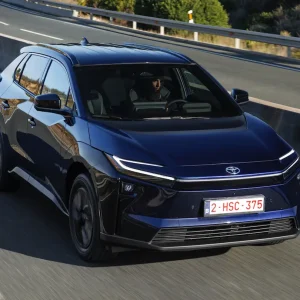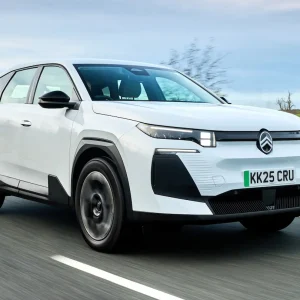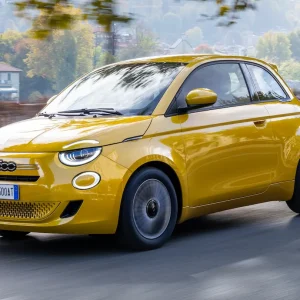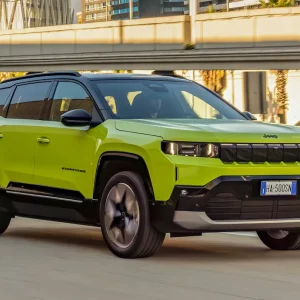With the interest in hybrid technology continuing to gain momentum and the crossover market still enjoying significant success, a car that combines both of these sectors surely sounds like a winning combination?
Kia certainly thinks it’s struck the right chord with the Niro, the firm’s first hybrid and all-new compact crossover.
Sharing its underpinnings with the new Hyundai Ioniq, the Niro is smaller than it’s Sportage stablemate yet larger than the Cee’d hatchback and Soul SUV in the firms line-up.
The Niro sits a little lower than the Sportage and features a wide front-end and the familiar tiger-nose grille design seen across the Kia line-up. It carries many of the features synonymous with other crossover cars, like chunky bumpers and flared wheel-arches, but despite the rugged(ish) looks, there will be no four-wheel drive option offered.
Under the bonnet is a 1.6-litre petrol engine that works in combination with a lithanium battery. There’s a total of 139bhp and 265Nm of torque available and the 0-62mph sprint is achieved in 11.5 seconds. As you may have guessed from the headline figures, this isn’t a quick car and when pushed hard the petrol engine can struggle to gain momentum, particularly when travelling uphill.
Mated to the engine is a six-speed automatic gearbox that proved smooth and timely with its gear changes, especially at urban speeds, where the car is more ideally suited.
Like many conventional hybrids, there’s no EV mode available. At very low speeds, like when driving in traffic, the electric battery works in isolation and the transition between engine and battery is seamless once you begin to gain speed. The battery can only work on its own for approximately two miles before needing regenerative braking to restore it back to power, though.
On paper, headline figures for the Niro impress with a combined fuel economy of 74.3mpg and CO2 emissions of 88g/km, on test we managed an average close to 60mpg on a variety of different roads, which is very good. If you’re looking for a company car with the lowest CO2 without having to charge the car, the Niro is about as good as it gets, slotting into a 15 percent BIK tax band for the current 2016/17 year.
Here our test car is fitted with 16-inch wheels as standard, the top two trims are fitted with 18-inch alloys and there’s a significant penalty in CO2 (up to 101g/km) for the bigger wheels. We’d stick with the former not only for the improvement in running costs, but we also preferred the softer ride quality too.
In the corners the Niro is composed, although lacking character and steering feel, preferring a more relaxed driving style; the car is comfortable on the motorway and easy to manoeuvre around the town too.
You can pick the Niro in four trims, although not confirmed they’re likely to follow the same format as the Sportage in 1,2, 3 and Limited Edition guises.
Mid-range 2 trim is likely to take the bulk of company car sales, though, as it comes fitted with key equipment like sat-nav and DAB radio.
Practical and spacious, there’s lots of head and legroom on offer, interior quality has taken a big leap forwards from previous generation Kia’s too and there’s ample storage options around the cabin. The compact electric motor is housed under the rear seats so doesn’t compromise the 427-litre boot space either.
Fit and finish overall is good with a distinct absence of cheap plastics in the cabin. The large 7-inch (or 8-inch on higher-spec’d cars) infotainment system is easy to navigate around and control and there’s an impressive array of safety kit on offer including an autonomous braking system and lane keep assist. There’s also the latest smartphone connectivity technology available including Android Auto and Apple CarPlay.
Kia admits it’s being very modest with it’s predictions for the Niro, 3-5000 sales have been forecasted in the first full calendar year, 60 percent of which is expected to account for fleet. As hybrid technology becomes more widely accepted and with the addition of the plug-in hybrid Niro, which joins the range in 2017, the firm believes it’s popularity could easily surpass predictions, though.
Residual values are yet to be confirmed but we’d expect the Niro to stand up well against the competition, with the firms seven-year/100,000 mile transferable warranty helping to drive further appeal in the used car market.
Full UK specification details and pricing is due to be announced next week, although Kia has confirmed that pricing will start from around £21,000.





